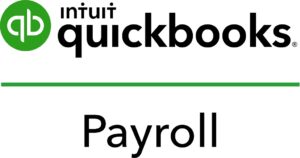It is very rare that you will get advance warning that a disaster is about to hit your company.
Even if you do have some time to plan, it doesn’t mean things won’t go wrong as every crisis is unique and brings with it its own challenges. The current crisis we are facing is unprecedented, and certainly unexpected, meaning many employers will be dealing with business-critical issues they never thought they would have to factor into their plans.
With this in mind, the coronavirus outbreak has reminded all of us that having robust continuity strategies in place to deal with a crisis are critical. However, a lot of businesses will have had little or no contingency planning for a crisis of this magnitude and will be scrambling around trying to figure out what to do in the face of such uncertainty.
>See also: Business continuity plan: What it is and why you need it
One of the major problems that surfaces from not having a robust plan in place is that in putting out fires, as an employer you can forget about arguably your most important stakeholder – your staff. Many are working harder than ever to take up the slack to ensure the businesses they work for survive this global pandemic. With members of staff potentially on furlough and those remaining in work adapting to meet the changing landscape, many teams are working harder than ever to support their business during unprecedented times. So, as an employer it is important not to forget this and asses the most appropriate ways to make sure staff feel they are being valued.
This means that, in addition to business operations and sales, your business continuity plans should focus on protecting your employees. During this period, businesses could be faced with payroll staff having to work remotely with limited access to systems and/or to self-isolating. So contingency plans may be required.
To protect your employees, your contingency plan should consider the following questions.
What do I do if the payroll processing team isn’t available?
If your payroll team is unavailable, those who step in to support your business need to be able to collate the required information and if necessary, process this into your payroll software.
If you use a payroll bureau then someone should be aware of how to give them all the information they require. That information may include, among other things:
- Starters and leavers;
- Permanent changes i.e. salary increases etc;
- Pension changes (in line with auto-enrolment legislation);
- Sickness and absence recording (this one will become vital); and
- Parental leave changes
An understanding of how this data is currently shared with the outsourced provider will be important. Is the data already held within your HR and/or time and attendance systems? Is it collated manually and then a standard template used to provide the data? Do you have an agreed payroll cut-off date and submission deadline?
Discover more around small business payrollDoes the change in payroll legislation impact me?
Pre COVID-19, payroll legislation was already a complex area. Now, we see rules and policies changing daily, so for a business owner you may have to factor this into your contingency plans.
If you have outsourced your payroll function, this should not concern you, although it is still important someone is able to check and authorise the payroll when complete.
If you process payroll in-house, this may be very concerning right now as you may only have one or two people with this specific knowledge. It can be difficult and uncomfortable involving additional people in the payroll process and you may rightly have concerns about the sharing of confidential information.
We have seen many businesses struggle though by limiting involvement to just one or two people. I would urge you to identify a trusted person in your business to provide additional cover here as a short-term solution.
What do I do if the payroll manager becomes ill?
In this current context, one of the most important issues that may arise is how you will pay your staff should your payroll manager become ill.
You should ensure that you have a solid and transparent plan to pay employees in the coming months. As I have said, adding additional cover is a sensible step in the short term but this may not feel enough to be a long-term back-up plan.
Resolving this situation quickly is tricky. It may be worth considering asking whether any outsourced providers have experience on your payroll system, and if so, whether they would be prepared to operate your payroll for a short period as a further contingency. Some key things to ask yourself as part of this planning should include:
- Who has access to BACS or the finance system for paying your employees?
- If you cannot access payroll, how will you know what to pay?
- How are pension contributions calculated for my employees and how would I communicate details of the amounts for each employee with my pension scheme provider?
- How will you meet the obligation of sharing pay slips with all team members?
Do I have to carry on issuing payslips?
Legally, employees are entitled to a payslip whether working in the office or remotely. This means that plans need to be put in place to ensure your staff continue to receive them throughout this period, including access to stationary or printers being provisioned if you usually issue oriented slips.
If you believe printed slips will be problematic, investigate electronic payslips as an alternative. Lots of firms have turned to this as their default option to combat paper waste, so in the longer term it may benefit the company switching to soft copies.
What are my obligations to HM Revenue and Customs?
Payroll information must now be reported to HMRC on or before payday as part of your RTI filings. You can incur fines if this duty is not met, so it is important that this doesn’t slip as a result of the current stress on the business.
It is important to note that pension contributions under auto-enrolment must continue and will need to be uploaded to your pension provider so that they know the total value of contributions to take. This will usually be by direct debit and crucially you’ll need to state how much to allocate to the pension fund of each employee.
Statutory communication is required to be sent to employees when certain auto-enrolment trigger events take place – it is worth checking whether this is covered by your pension scheme or your payroll or HR team are currently carrying out this task.
What are the key considerations what putting together a contingency plan?
Whether you operate a small business or a large corporation, effectively navigating a crisis depends on your people and processes. Focus on your resources here, making sure your IT is up to scratch. Putting your staff at the heart of your plans will enable you to handle any incident effectively. For those who are looking to develop a robust plan now, there are four key areas to tick off as part of the process:
- Test your processes to ensure they work with all the recent changes;
- Ensure you have additional, appropriate staff in place with access to all payroll, payment and pensions systems;
- If you have time, put training in place so others understand what is required; and
- Speak to your software providers to check if they can increase support if required.
If you have concerns about the resilience of your payroll process in-house then it might be worth considering outsourcing this critical function to ensure that payments to your employees are protected.
Matthew Stark is partner at Mazars.
SmallBusiness.co.uk has teamed up with Intuit Quickbooks to help you find the right Payroll software for your business. To find out more about getting your payroll and business finances all in one place, click here

Further reading
Government looking at bringing in part-time furlough immediately





